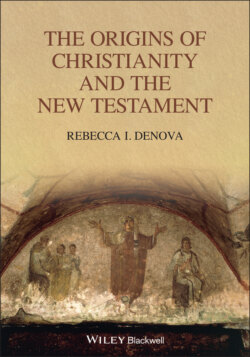Читать книгу The Origins of Christianity and the New Testament - Rebecca I. Denova - Страница 25
Faith vs. Rituals
ОглавлениеAny text that examines the Bible, and especially the New Testament, will encounter the English word “faith” in translation. However, it was only in the eighteenth century that “faith” was used to describe “belief” in a religious system, particularly in teachings on individual salvation. At the same time, the word “faith” also came to mean “belief” in something despite evidence to the contrary. But the ancients did not often articulate their ideas as “belief” or “faith” as we understand it. “Faith” (derived from the Greek word pistis) originally meant “loyalty,” in this case loyalty to a set of shared concepts and rituals involved in worship of a god or gods.
The great concern in the ancient world was to carry out rituals involved in the various native cults correctly. The correct rituals were understood to be handed down “by the ancestors.” In ancient Rome, if a priest or augur stumbled over the words, he had to begin again. Several books in the Jewish Scriptures describe the correct way in which to perform the rituals of the Temple cult in Jerusalem.
Beginning with the New Testament, this focus on the rituals of non-Christians became a negative, derogatory way in which to attack both Jews and the native cults; hence the modern concept that the Jews were “legalistic” and were only concerned with “the letter of the Law.” The idea that native cults lacked “spirituality” (Christians had faith, pagans had rituals) still finds its biased way into many books on the early history of Christianity.
